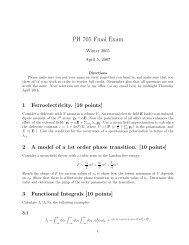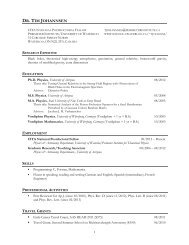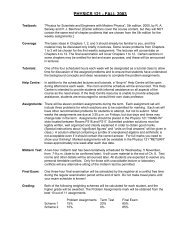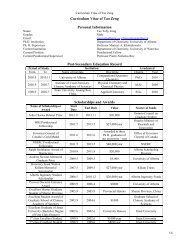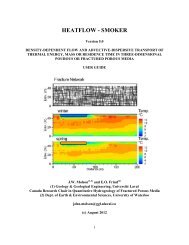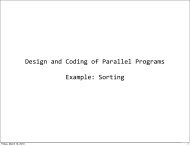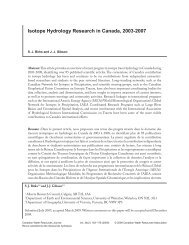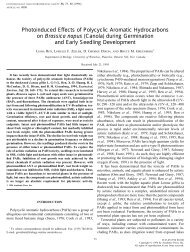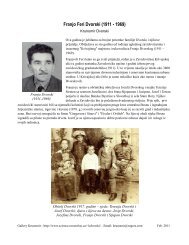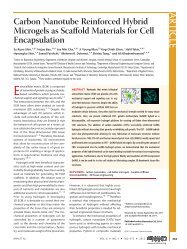POLYMIN - University of Waterloo
POLYMIN - University of Waterloo
POLYMIN - University of Waterloo
Create successful ePaper yourself
Turn your PDF publications into a flip-book with our unique Google optimized e-Paper software.
<strong>POLYMIN</strong> 2005<br />
The three basic mathematical forms <strong>of</strong> sorption reaction models, namely isothermal, massaction/ion-exchange,<br />
and surface complexation/electrostatic models, have been incorporated into<br />
MINTEQ (Allison et al., 1990). The isothermal models included are the activity K d adsorption<br />
model, the activity Langmuir adsorption model, and the Freundlich model. The electrostatic<br />
adsorption models available are the constant-capacitance model, the diffuse-layer model, and the<br />
triple-layer model. To date only the ion-exchange model has been verified in the combined<br />
mass-transport chemical-equilibrium model.<br />
Ion-exchange sorption reactions are simulated using the Gaines and Thomas model for ion<br />
exchange (Allison et al., 1990). This model assumes that the surface site is initially occupied by<br />
an exchangeable ion that is released into solution during the exchange process, that the charge on<br />
the surface <strong>of</strong> the solid remains constant, and that the number <strong>of</strong> surface sites available for<br />
sorption, expressed as the cation exchange capacity (C.E.C.), is fixed. The ion-exchange<br />
reaction is written as:<br />
vA<br />
vB<br />
B + AB(ad) ⇔ B A(ad) + A<br />
(13)<br />
v A v v v<br />
B<br />
where v A and v B are the change on components A and B respectively, A(ad) and B(ad) are the<br />
adsorbed mass <strong>of</strong> components A and B. The mass action equation for the above expression is<br />
K<br />
AB<br />
⎛ A(ad)<br />
= ⎜<br />
vA<br />
⎝ [A ]<br />
⎞<br />
⎟<br />
⎠<br />
vB<br />
vB<br />
⎛ [B ]<br />
⎜<br />
⎝ B(ad)<br />
⎞<br />
⎟<br />
⎠<br />
vA<br />
(14)<br />
where the square brackets represent solution activity, and K AB is the selectivity coefficient <strong>of</strong><br />
species A with respect to species B.<br />
Mineral Precipitation and Dissolution<br />
Mass-action equations, which relate ion activities and a solid specific solubility product, describe<br />
mineral precipitation and dissolution reactions. These reactions can be written as follows (Walter<br />
et al., 1994a):<br />
A a<br />
B b(s)<br />
⇔ aA (aq)<br />
+ bB (aq)<br />
(15)<br />
The subscripts (s) and (aq) refer to solid and aqueous phases respectively. The thermodynamic<br />
solubility product for a given solid is described by:<br />
K<br />
sp<br />
a<br />
A B<br />
= [ ] [ ]<br />
[ AB]<br />
a<br />
b<br />
b<br />
(16)<br />
where K sp<br />
is the solubility product for the solid.<br />
13




